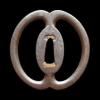-
Posts
3,974 -
Joined
-
Last visited
-
Days Won
59

Nobody replied to Bungo's topic in General Nihonto Related Discussion

Nobody replied to Bungo's topic in General Nihonto Related Discussion

Nobody replied to Bungo's topic in General Nihonto Related Discussion

Nobody replied to Bungo's topic in General Nihonto Related Discussion

